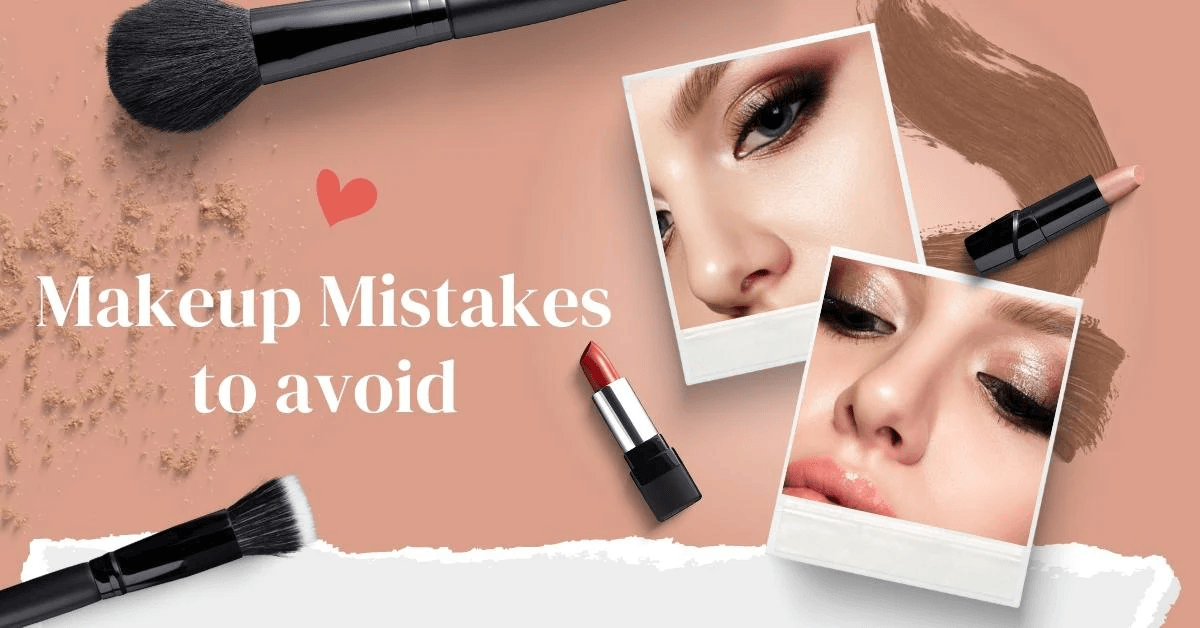Top 10 Makeup Mistakes and How to Fix Them
Learning how to apply makeup correctly can make you look and feel great. It’s all about enhancing your natural beauty and feeling confident every day. But with so many products and tips out there it can be a bit tricky especially if you're just starting out. That’s why knowing the basic dos and don’ts is good to help you avoid common makeup errors. By picking up simple makeup tips for beginners anyone can learn to apply makeup well and look their best.
When you're learning something new including how to apply makeup it's common to make a few blunders. Maybe you’ve put on too much powder or your eyeliner isn't straight—don't worry! You may learn and grow from every mistake you make. Our aim here isn’t just to tell you what's wrong but to show you easy ways to fix makeup blunders. This way every mistake helps you get better at applying makeup.
At Trusted10.io we understand that making makeup mistakes is part of learning. Think something is wrong? Our specialists can help you figure out what it is and how to solve it. In this blog post we’ll discuss ten makeup mistakes many people make and give you easy fixes. If you want to learn how to apply makeup like a pro and have fun doing it we've got you covered. Let’s get started and turn those oops moments into aha moments with helpful advice you can use immediately!
Overdoing Foundation
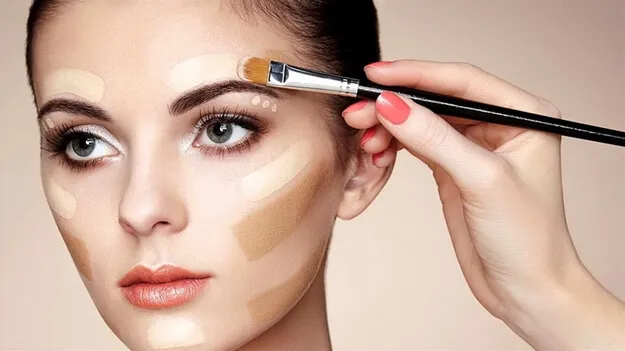
Because it creates a uniform surface and conceals imperfections foundation is the foundation of every beautiful makeup look. However when applied too heavily the foundation can make your face look unnatural and mask-like and it can even emphasize fine lines and pores instead of concealing them. This makeup mistake happens a lot because it's tempting to cover every imperfection thoroughly. However the foundation aims to enhance your natural skin not hide it under a thick layer. This is where the importance of application technique comes in.
Here are some pointers on applying foundation correctly to avoid a heavy cakey look:
- Start small: Use just a tiny amount of foundation initially. You can always add more if needed.
- Use the right tools: Use a foundation brush or a cosmetic sponge to apply the foundation. These tools help spread the product evenly across your skin.
- Blend blend blend: Mix the foundation into your skin thoroughly paying extra attention to the edges of your hairline and jawline.
- Right shade is crucial: Make sure the foundation you chose is an exact match for your skin tone. Testing shades in natural light is the best way to find a good match.
- Go light: Opt for a lightweight formula. These foundations can still provide good coverage without the weight maintaining a more natural look.
- Set it right: If you need to set your foundation use a fine translucent powder—apply it sparingly to avoid the caked-on effect.
Using these guidelines as a guide you may achieve a flawless natural-looking complexion using foundation. Remember the best foundation application is one that looks like you might not be wearing any at all!
Incorrect Concealer Application
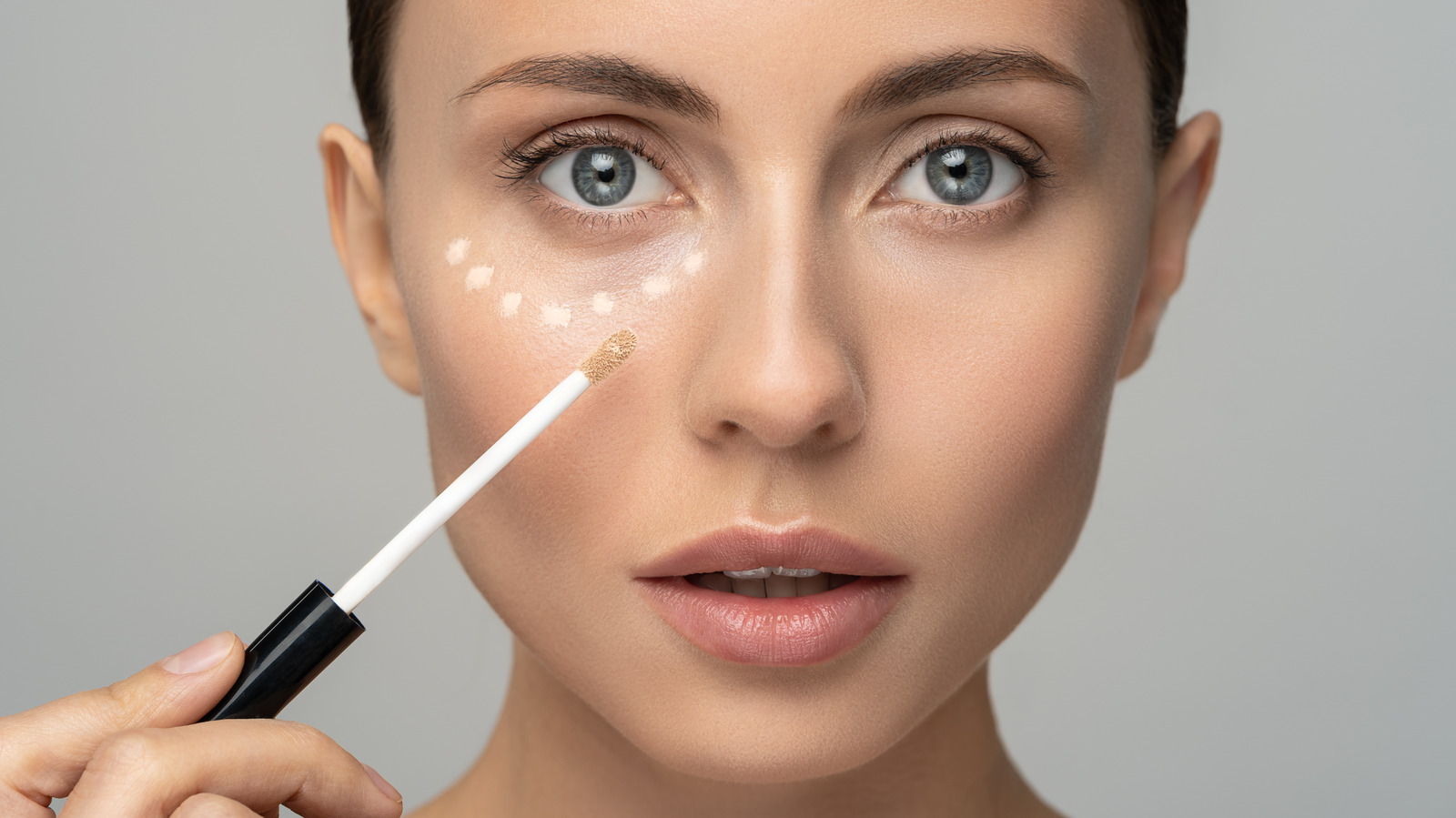
One of the best ways to hide imperfections and dark patches is using concealer. However improper use can accentuate these spots instead of masking them. Some common concealer mistakes include picking the wrong color using too much and not blending it in well. This can make the concealer look thick and noticeable which is different from what we want. Your skin should seem even and smooth as if you hadn't applied any makeup at all.
Here are some easy steps to use concealer the right way:
- Choose the right color: If you have dark circles under your eyes you may need a unique color corrector to help cover the dark color first. Next use a concealer that either blends in with your skin tone or is slightly lighter to illuminate bright spots.
- Use just a little bit: Start with a tiny dot of concealer not too much. Additional may be added as needed.
- Tap it on: On the areas you want to hide dab a little concealer. Use your finger or a small sponge to tap it into your skin gently. Don’t rub; pat softly.
- Blend it well: Make sure there are no apparent lines where the concealer starts or stops. It should blend seamlessly into your skin.
- Set it with powder: A small amount of light transparent powder on top can help keep the concealer from sliding around or settling into lines. Just a light dusting is enough.
By following these tips you can ensure your concealer looks natural and makes your skin look its best.
Uneven Eyebrows
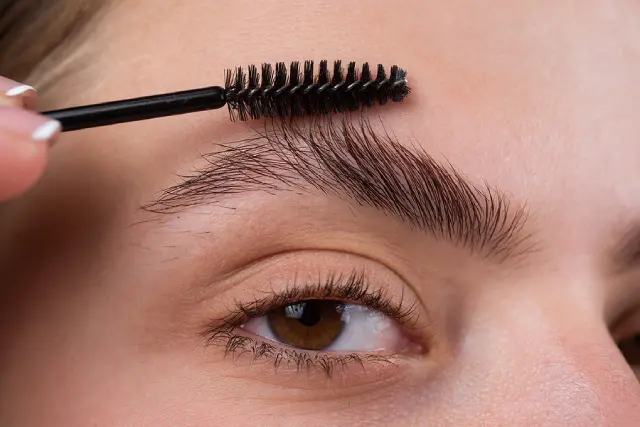
Uneven eyebrows can make your face look a little off because they’re essential for how your makeup turns out. Sometimes the natural growth of one eyebrow or excessive plucking can cause it to appear different from the other. It’s okay if they’re not the same but there are simple ways to help them look more alike and neat.
Here’s how you can shape and fill in your eyebrows quickly:
- Brush them up: Start by using a small brush (called a spoolie) to brush all your eyebrow hairs upwards. This allows you to see their natural shape and areas where they may be uneven.
- Draw a gentle outline: Lightly draw the shape you want for both eyebrows with a soft eyebrow pencil or a little bit of eyebrow powder. Make an effort for them to resemble one another.
- Fill in the thin spots: If some parts of your eyebrows are less complete use the pencil or powder to make light small strokes that look like tiny hairs. This helps fill in the gaps but still keeps it looking natural.
- Blend it all: Use the spoolie again to brush through your eyebrows. This blending helps soften any sharp lines and spreads out the color evenly.
- Keep them in place: Last put on a bit of clear eyebrow gel over them. This gel helps keep your eyebrows shaped nicely all day.
These steps can help your eyebrows look better matched and tidy making your whole face look more balanced.
Harsh Contouring
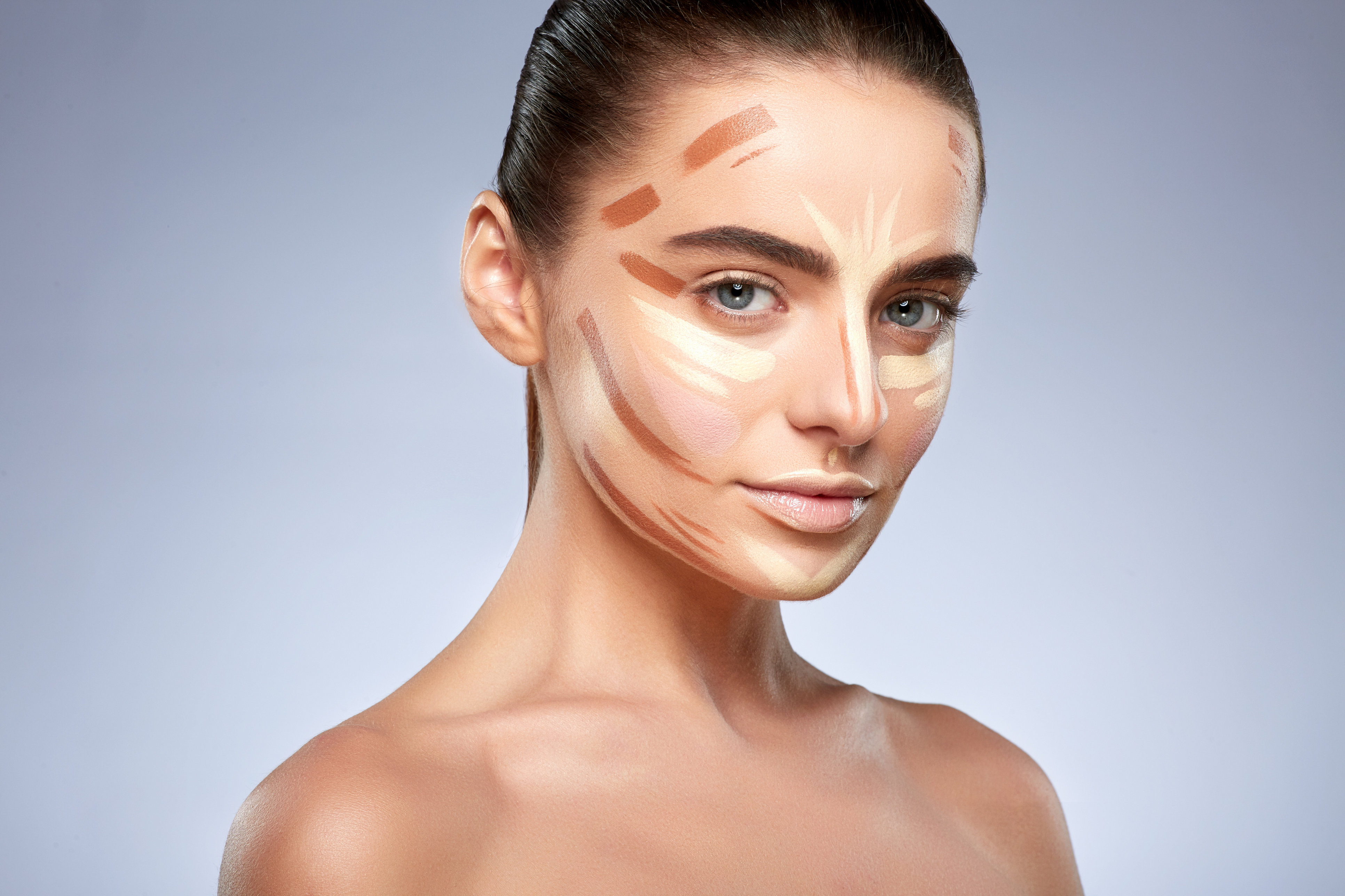
Contouring is a popular makeup technique that helps define and shape your facial features. However it can create an unnatural look that seems more like a mask than makeup when done too heavily. Harsh contouring often stands out too much making your face look overly sculpted and drawing attention in a not-so-flattering way. Usually this occurs when you use too much product the shade is too dark or the contour requires proper blending. Subtly enhancing your natural features rather than drastically changing your face shape should be the objective of contouring.
In order to get a subtle and unnatural shape consider the following:
- Right shade matters: A good rule of thumb is to choose a contour shade that is somewhat darker than your skin tone. Anything darker can start to look unnatural.
- Apply strategically: Lightly apply the contour product in the hollows of your cheeks along your jawline and at your temples. These areas naturally have shadows so you're enhancing what's already there.
- Blend thoroughly: To mix the contour into your skin use a moist makeup sponge or a contour brush. Good blending is vital to making it look like a natural shadow rather than a stripe.
- Build up slowly: You should start with a little product and add more as you go. Adding more is far simpler than removing.
- Keep it natural: Focus on enhancing your features subtly. The idea is not to change your appearance but to accentuate your natural bone structure.
Following these steps you can use contouring to subtly enhance your features without looking harsh or overdone. Remember the best contouring is the kind that seems almost invisible and makes your natural features pop.
Mismatched Foundation Shade
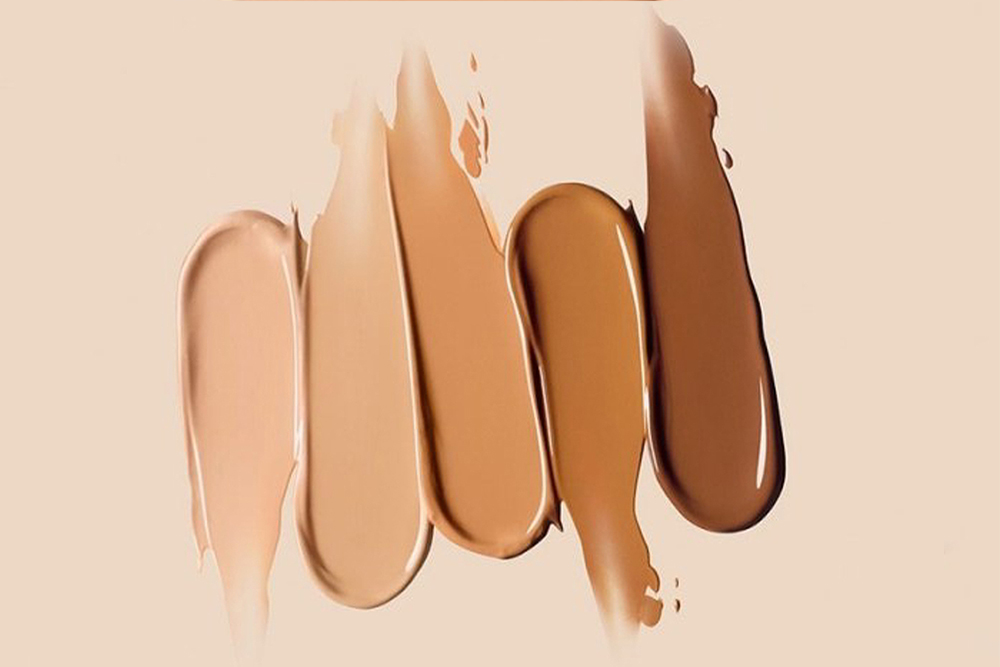
Finding the right foundation shade that matches your skin color is essential for a natural makeup look. If the foundation is too light or dark it won't blend well and might look like a mask. This can make it evident that you're wearing makeup which isn't what we want. To pick the best foundation color look at your skin's warm or cool tones and always test the foundation on your jawline—not on your hand—because the color on your face and neck should match.
Do not fret if you happen to purchase a foundation that is incompatible with your skin tone. Some easy solutions are as follows:
- Mix two shades: Sometimes mixing a bit of a lighter foundation with a darker one can create the perfect color that matches your skin.
- Use light and dark: You can put a lighter foundation in the middle of your face and a darker one around the edges. This can help the color look right and shape your face.
- Blend it out: Blend the foundation down onto your neck. This helps to avoid showing any lines where your makeup stops.
- Adjust the color: If the color still looks a bit off try using a small amount of a different colored concealer to balance it out.
- Try different foundations: Trying a few various foundations may be necessary to locate the one that works best. Look for those that say they build up which means you can add layers to get the coverage right without it looking too heavy.
By trying these tips you can make your foundation look just right and feel more confident that your makeup looks great.
Overdrawn Lips
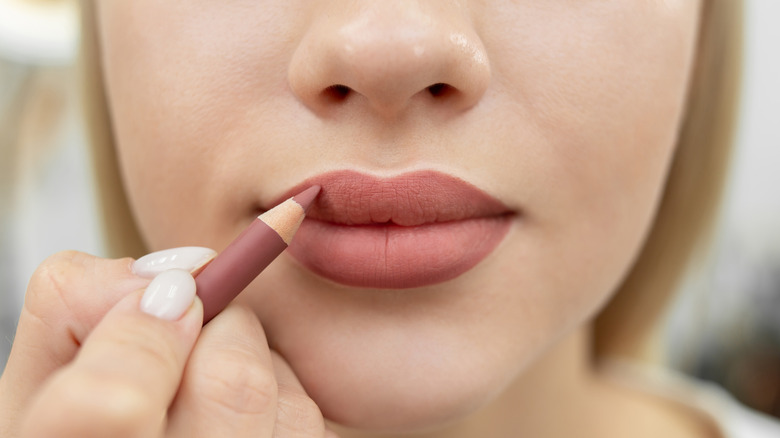
Sometimes overdrawing your lips can give them an unnatural and overly exaggerated look. This occurs when the lip liner extends too far beyond your natural lip outline drawing attention away from the rest of your makeup and overall beauty. Common mistakes include choosing a dark or bold lip liner going too far outside the natural lip borders and failing to blend the lip liner with your lipstick. This can result in lips that look more like a cartoon than chic disrupting the balance and harmony of your facial features.
If you want fuller more beautiful lips try these tips:
- Match the liner: Select a lip liner that closely matches your natural lip color or is just one shade darker. This helps keep the look subtle and realistic.
- Follow your line: Carefully outline your lips with the liner along your natural lip line. To keep the enhancement believable avoid going beyond this line.
- Fill them in: After outlining fill your lips with the same liner before applying lipstick. This provides a good base and helps the color last longer.
- Blend well: Apply lipstick and liner using a lip brush. This step is crucial for avoiding harsh lines and ensuring the colors merge well.
- Choose wisely: Choose a lip color that works well with your complexion and lips. This beautifies your lips without overwhelming your face.
- Define subtly: Focus on defining the natural shape of your lips rather than trying to create a new shape. This enhances your inherent beauty while keeping everything in harmony.
By following these simple techniques you can make your lips look fuller and more defined enhancing your natural beauty without going overboard. This approach keeps your makeup harmonious and attractive.
Clumpy Mascara
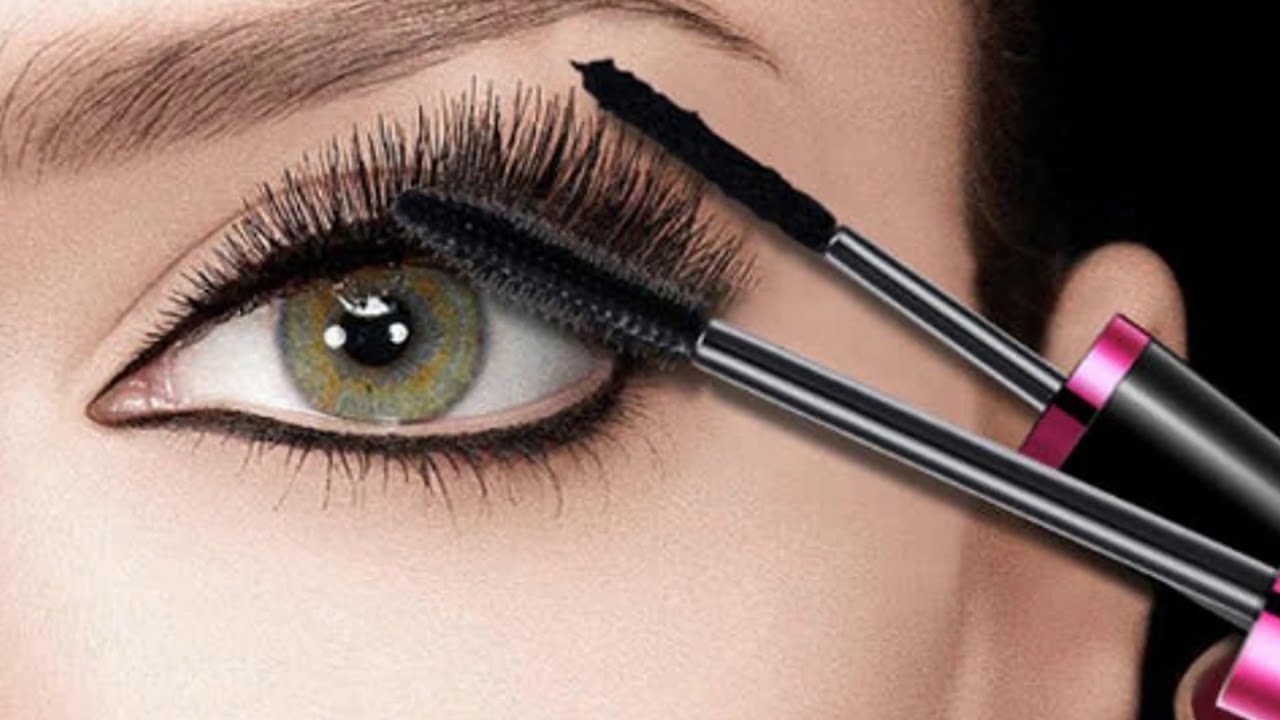
Clumpy mascara can make your eyelashes stick together and look messy like little spider legs which isn’t very pretty. This happens if the mascara is old you put on too much at once or you don’t spread it out well on your lashes. Keeping your lashes smooth and clump-free makes your eyes look nicer as well as your makeup cleaner.
To avoid clumps and maintain your eyelashes in pristine condition follow these simple steps:
- Change it up: Mascara gets old and clumpy after a while. Try to get a new one every three months so it stays fresh.
- Less is more: When you remove the brush from the tube wipe off any extra mascara on the edge. This helps stop lumps before you even start.
- Right way to apply: As you apply mascara wriggle the brush from the base of your eyelashes to the tips. This helps cover all your lashes without sticking them together.
- Comb them out: After you put on mascara you can use a clean small brush (like a spoolie) to comb your lashes gently. This distributes the mascara evenly.
- Use a primer: Apply a lash primer before applying mascara. It makes the lashes smooth allowing the mascara to go on better without clumping.
- Take your time: If you want thicker lashes put on a few light coats of mascara not one heavy one. Let it dry a little between coats.
By following these simple steps you can ensure your lashes look long and beautiful without any clumps making your eyes stand out in a good way.
Cakey Makeup
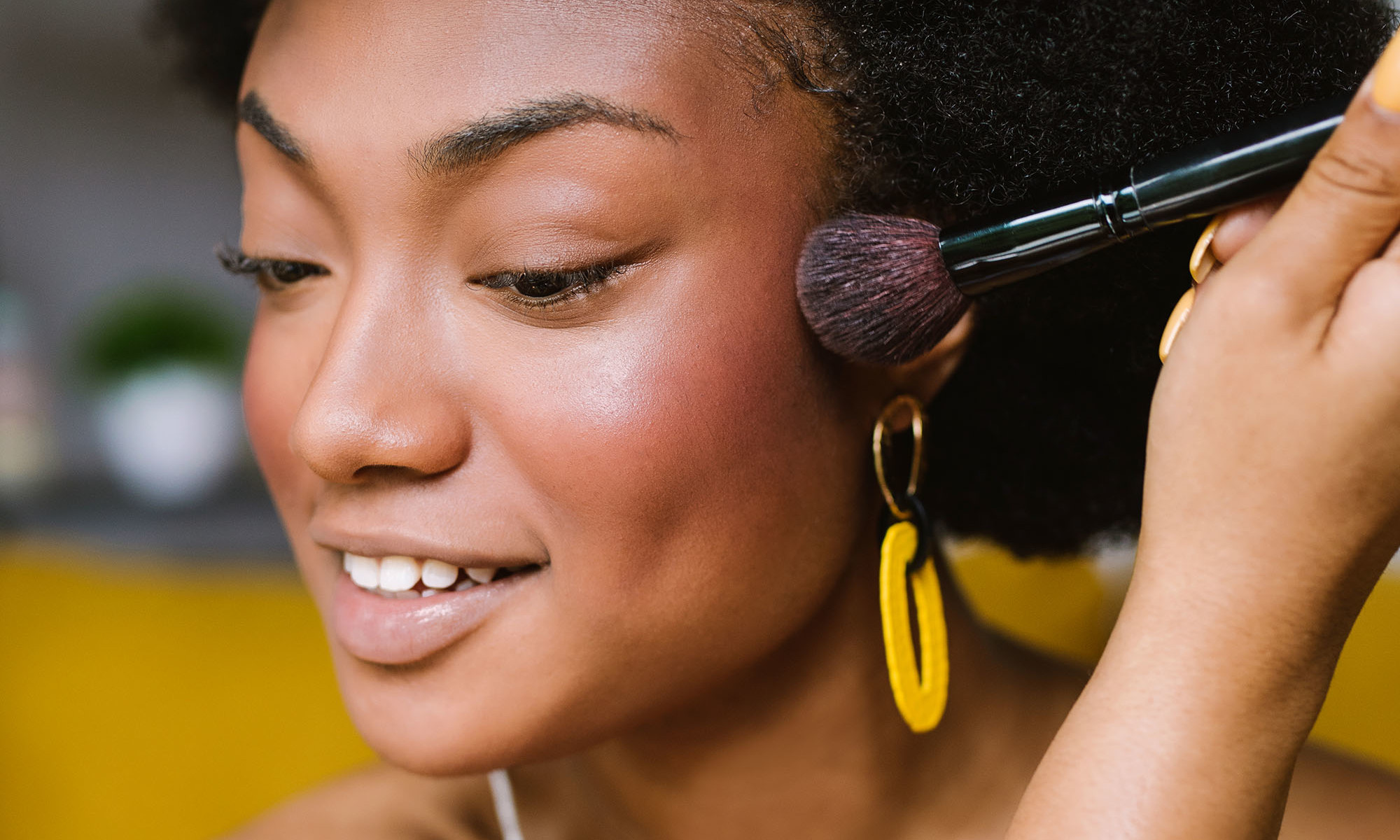
Cakey makeup is a common problem that can make your face look heavy and overly made-up rather than smooth and natural. This happens when too much makeup is applied or needs to be blended better. It can also occur if you’re using the wrong type of foundation for your skin or layering too many products on top of each other. The result is makeup that looks thick feels uncomfortable and might even emphasize lines or dry spots instead of hiding them. You can thankfully prevent this and maintain the beauty of your makeup by following a few simple procedures.
If you want a beautiful complexion that doesn't seem cakey use these tips:
- Prep your skin: To begin make sure your skin is clean and hydrated. Using a primer is also a great idea as it creates a smooth base and helps makeup stick better.
- Choose the proper foundation: Look for a buildable foundation that is lightweight and a great match for your skin tone. You can lightly layer this type of foundation without it becoming heavy.
- Apply in layers: Put on your foundation in thin layers. Blend in a little bit at a time with a sponge or brush. Only add more where you need extra coverage.
- Use powder sparingly: Lightly dust on some translucent powder to set your makeup. If you want to keep your face from looking cakey don't apply too much.
- Finish with a spray: To get a more natural dewy effect and to help blend all of your makeup layers together try using a setting spray. It also allows your makeup to last longer without drying out your skin.
By following these steps you can say goodbye to cakey makeup and enjoy a more natural flawless look that feels as good as it looks.
Ignoring Skincare Prep
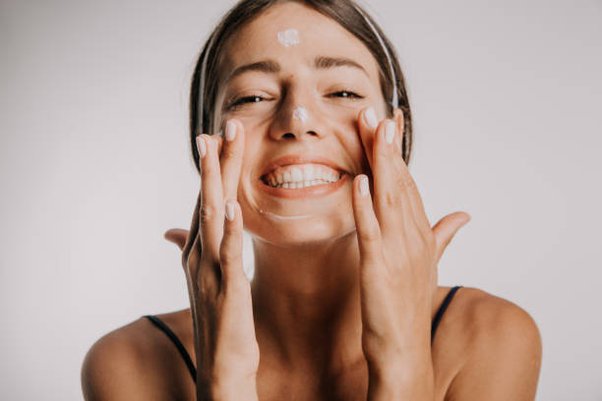
Skincare preparation is a crucial but often overlooked part of applying makeup. Making sure your skin is properly prepped before applying makeup may greatly improve its appearance and durability. Good skincare prep helps create a smooth even base prevents makeup from settling into fine lines and makes you look more natural and radiant. Moreover well-prepared skin can handle makeup better throughout the day avoiding issues like caking or sliding. If you skip this step you may find your makeup doesn't apply as smoothly or last as long and overall it won't look as good as it could.
Here’s a simple skincare routine to create the perfect base for your makeup:
- Cleanse gently: Use a mild cleanser to wash your face first. This removes any oil dirt or leftover makeup and gives you a clean slate. For dry or sensitive skin go for a gentle cleanser that does not lather.
- Tone your skin: Toner should be used after cleaning. This may reduce the appearance of large pores and restore a healthy pH level to the skin. It gets the skin ready to absorb the subsequent items better.
- Apply serum: Choose a hydrating serum that fits your skin type. Serums can target concerns like dryness dullness or fine lines and provide intense hydration.
- Moisturize well: Apply a high-quality moisturizer afterwards. Makeup goes on more smoothly and stays on longer when you use this to seal in moisture and smooth out your skin.
- Prime your face: Lastly apply a primer. Primer can smooth over fine lines pores and texture creating an even surface for makeup. It also helps makeup stay put longer.
Incorporating these steps into your pre-makeup routine ensures that your skin is healthy hydrated and perfectly prepped. This improves the appearance of your makeup and helps to preserve the natural attractiveness of your skin.
Not Setting Makeup
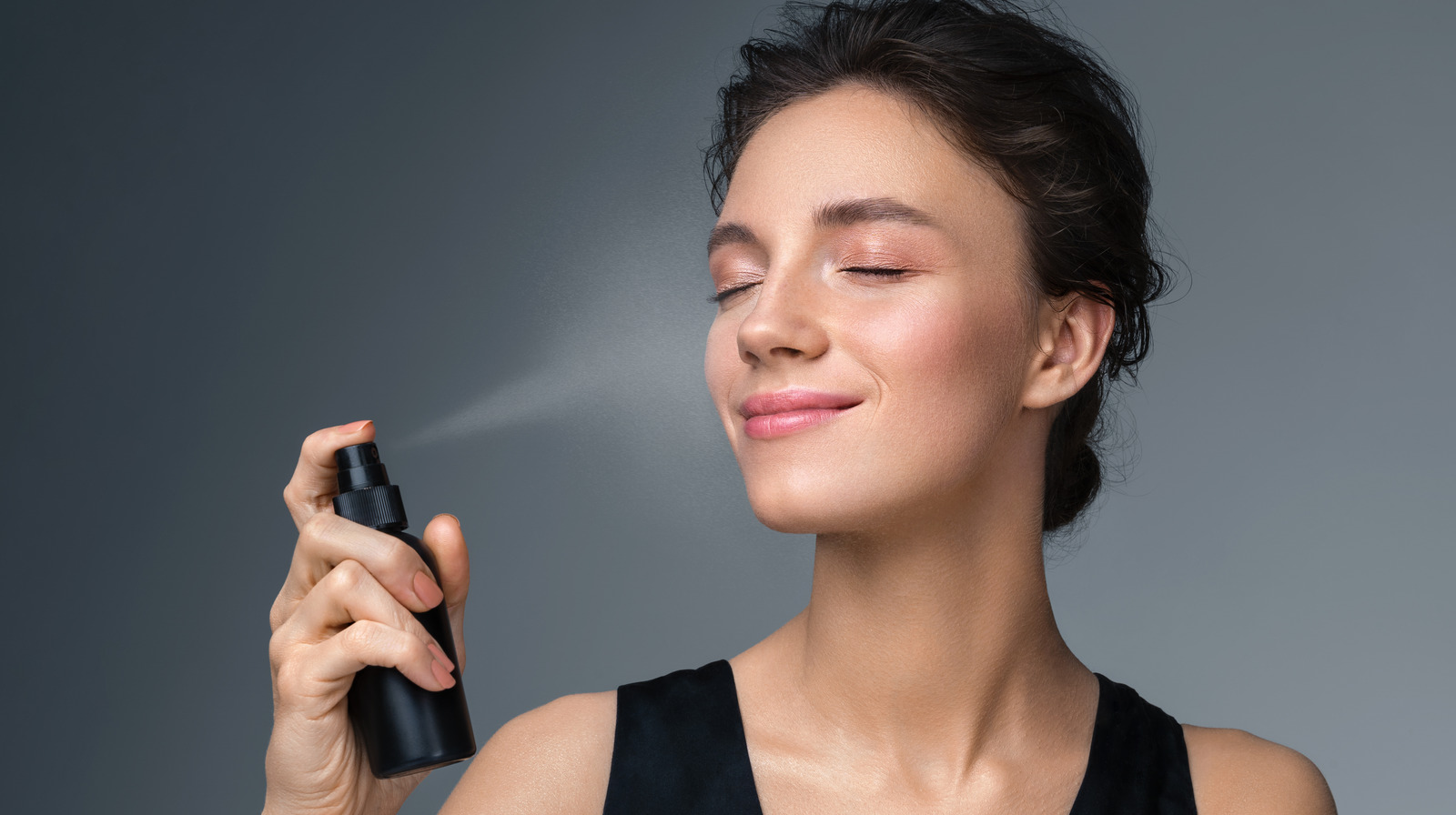
Setting your makeup is crucial if you want it to look good all day. If you don't set your makeup it might rub off crease or fade which means it won't look as nice after a few hours. Setting it helps everything stay right where you put it from morning until night so you look as fresh at the end of the day as you did at the beginning.
If you want your makeup to last all day without fading try these simple tips:
- Use a setting powder: After you put on your makeup use a soft brush to lightly apply a thin layer of translucent setting powder especially on your forehead nose and chin. This powder helps control oil and stops your makeup from sliding around.
- Spray to set: A setting spray is like a magic fix—it helps keep everything in place. To use it just shut your eyes and spray your face lightly. This can make your skin look dewy and keep your makeup from fading.
- Pay attention to your under-eyes: If you use concealer under your eyes gently dab a little setting powder on top. This helps stop the concealer from creasing or settling into lines.
- Touch up if needed: Bring a small setting spray with you if you’ll be out for a long time. Spraying more during the day can freshen up your makeup and give your skin a nice glow.
- Start with a primer: Before you apply makeup apply a primer. This helps smooth out your skin and ensures that your makeup sticks better and lasts longer.
By following these steps you can ensure that your makeup stays put and looks fresh no matter how long your day is.
Conclusion
We have covered 10 typical cosmetic faux pas and their solutions. A few simple steps can fix each mistake from using too much foundation to forgetting to set your makeup. We’ve learned to pick the right makeup colors apply them gently and ensure everything looks good all day. Knowing these tips can make your makeup look smoother and more beautiful.
Please use these tips next time you do your makeup. Remember it's okay to make mistakes because that's how you learn and improve. Try out these ideas like blending your foundation well or making sure your lipstick isn’t too heavy and see how much better your makeup can look. It’s all about practicing and getting more comfortable with doing your makeup.
At Trusted10.io we're here to help you improve your makeup skills. With practice everyone can improve their makeup skills. Do your best never stop learning and never be scared to attempt anything new. Your competence and self-assurance will grow with each repetition.
